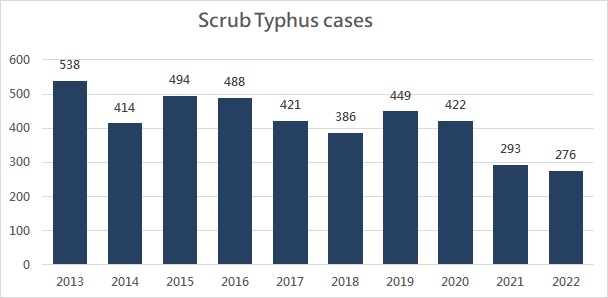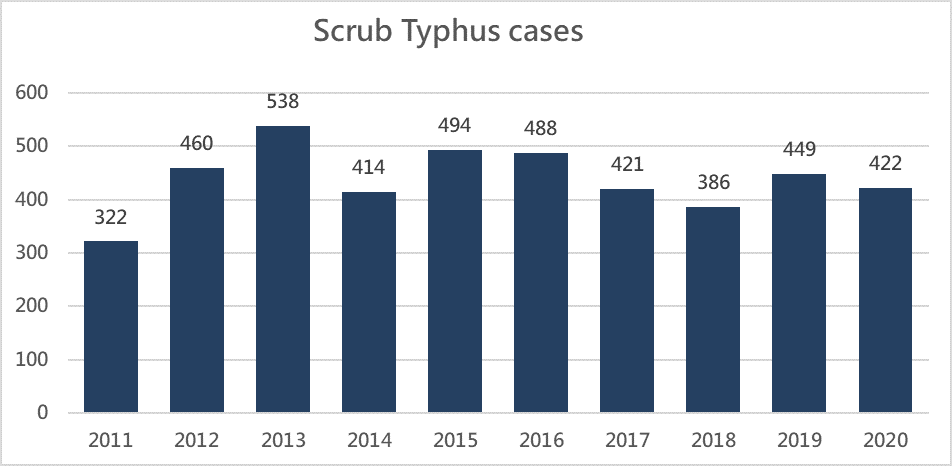- About CDC
- Diseases & Conditions
- Programs & Campaigns
-
Data & Statistics
- Taiwan National Infectious Disease Statistics System
- Statistics of HIV/AIDS
- Disease Surveillance Express
- Influenza Express
- National Notifiable Disease Surveillance Report
- Weekly Report of Enterovirus Infection
- Taiwan Healthcare-associated infection and Antimicrobial resistance Surveillance System
- Taiwan CDC Open Data Portal
- International Cooperation
-
About CDC
- Diseases & Conditions
-
Programs & Campaigns
-
Data & Statistics
- Taiwan National Infectious Disease Statistics System
- Statistics of HIV/AIDS
- Disease Surveillance Express
- Influenza Express
-
National Notifiable Disease Surveillance Report
National Notifiable Disease Surveillance Report
-
Weekly Report of Enterovirus Infection
Weekly Report of Enterovirus Infection
- Weekly Report 2025
- Weekly Report 2024
- Weekly Report 2023
- Weekly Report 2022
- Weekly Report 2021
- Weekly Report 2020
- Weekly Report 2019
- Weekly Report 2018
- Weekly Report 2017
- Weekly Report 2016
- Weekly Report 2015
- Weekly Report 2014
- Weekly Report 2013
- Weekly Report 2012
- Weekly Report 2011
- Weekly Report 2010
- Weekly Report 2009
- Weekly Report 2008
- Taiwan Healthcare-associated infection and Antimicrobial resistance Surveillance System
- Taiwan CDC Open Data Portal
- International Cooperation
- News
- Privacy Policy
- Security Policy
- Government Website Open Information Announcement
- Copyright Notice on Health Educational Materials
Background
Scrub typhus is an acute, febrile, infectious illness that is caused by Orientia (formerly Rickettsia) tsutsugamushi. It is also known as tsutsugamushi disease. Scrub typhus was first described from Japan in 1899, and is endemic to a part of the world known as the “tsutsugamushi triangle”, which extends from northern Japan and far–eastern Russia in the north, to northern Australia in the south, and to Pakistan in the west.
Scrub typhus is transmitted to humans and rodents by some species of trombiculid mites (chiggers). The mite is very small (0.2–0.4 mm) and can only be seen through a magnifying glass or microscope. Leptotrombidium deliense was found to be the primary chigger species in Taiwan. Chigger mites act as the primary reservoirs for O. tsutsugamushi. Humans acquire the disease from the bite of an infected chigger.
Scrub typhus is difficult to recognize and diagnose because the symptoms and signs of the illness are often non–specific. However the bite of the mite may leave a characteristic black eschar that is helpful to the doctor for making the diagnosis. Current treatment for scrub typhus is based on antibiotic therapy.

Figure: Scrub typhus cases in Taiwan, 2013-2022.
Scrub Typhus Surveillance in Taiwan
- Taiwan National Infectious Disease Statistics System–Scrub Typhus
- Self–reporting through toll–free 1922 hotline or local public health authority.
Prevention and Control
- There are no effective vaccines for scrub typhus. The main prevention and control strategies in Taiwan include case identification and public education.
- Short–term vector reduction using environmental insecticides and vegetation control.
- Personal preventive measures to be taken when visiting bush areas to ward off infection.
- (1) Wearing protective clothing, e.g., long–sleeved shirts and trousers.
- (2) Insect repellents can be applied to the skin and clothing to prevent chigger bites.
- (3) Do not sit or lie on bare ground or grass; use a suitable ground sheet or other ground cover.
FAQs
- How is the scrub typhus transmitted?
- Scrub typhus is transmitted to humans and rodents by some species of trombiculid mites (chiggers). This mite is fastidious in matters of temperature, humidity and food, and finds everything suitable in restricted areas. Chiggers like to stay at the tips of weeds, waiting for an opportunity to attach to passing humans or animals. Therefore, the chance of becoming infected with scrub typhus is much higher when people walk through bush areas. Scrub typhus is generally seen in people whose occupational or recreational activities bring them into contact with ecotypes favorable with vector chiggers.
- What are the clinical symptoms of scrub typhus?
- After being bitten by the chigger, an eschar will form over the bite, and the incubation period usually ranges from 9 to 12 days. Subsequently, symptoms such as persistent fever, headache, sweating and swelling or inflammation of the lymph gland will begin to develop. After having had fever for about 1 week, a dark red papule will appear in the trunk, spread to extremities, and disappear after several days.
- Is the scrub typhus epidemic seasonal in Taiwan?
- The seasonal occurrence of scrub typhus varies with the climate in different countries. The period of epidemic is influenced by the activities of the infected mite. It occurs more frequently during the rainy season. Certain areas such as forest clearings, riverbanks, and grassy regions provide optimal conditions for the infected mites to thrive. According to Taiwan CDC surveillance data, scrub typhus cases were reported throughout the year in Taiwan, which usually began to increase in May and peak during June and July.
More Information
Images


About CDC
Data & Statistics
- Taiwan National Infectious Disease Statistics System
- Statistics of HIV/AIDS
- Disease Surveillance Express
- Influenza Express
- National Notifiable Disease Surveillance Report
- Weekly Report of Enterovirus Infection
- Taiwan Healthcare-associated infection and Antimicrobial resistance Surveillance System
- Taiwan CDC Open Data Portal

